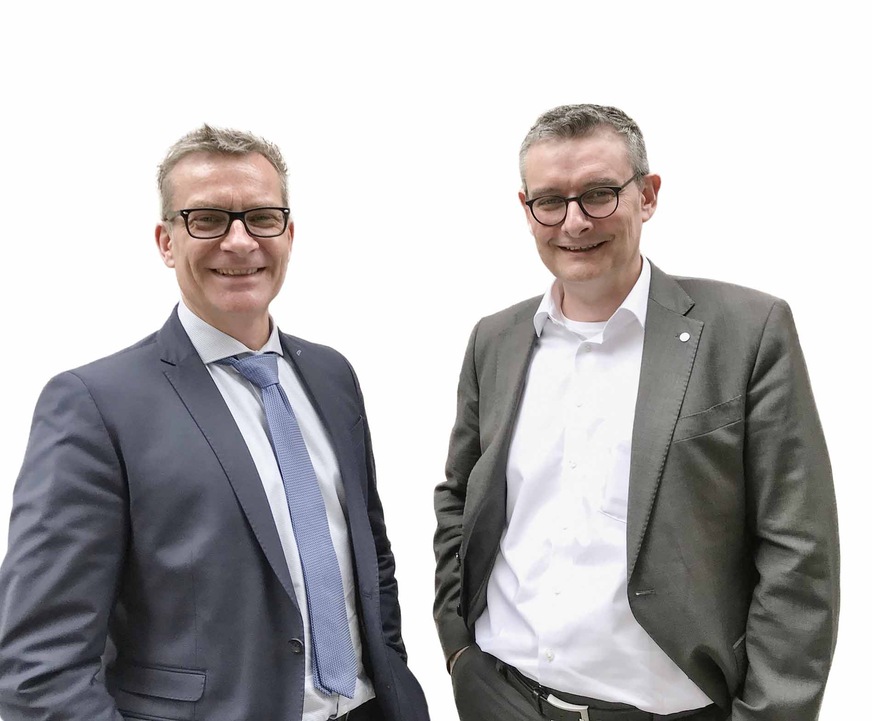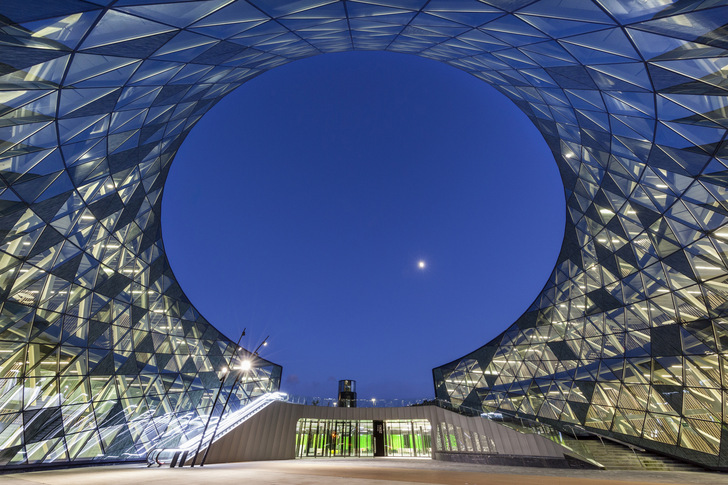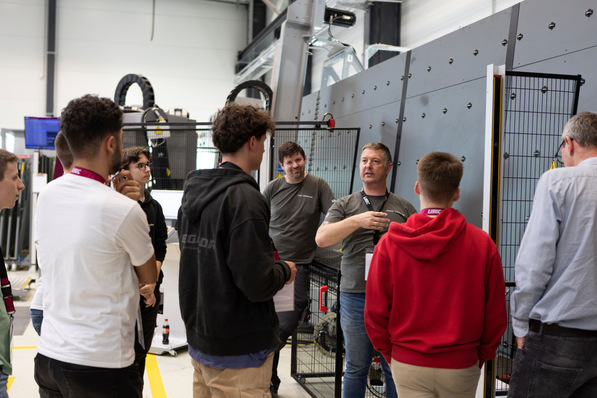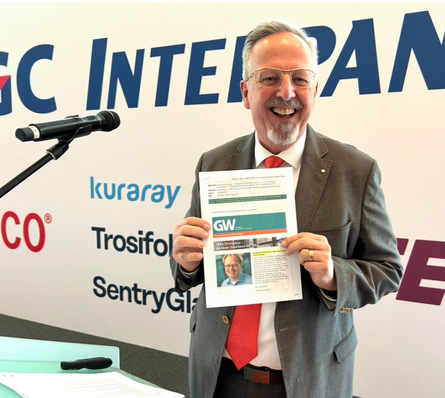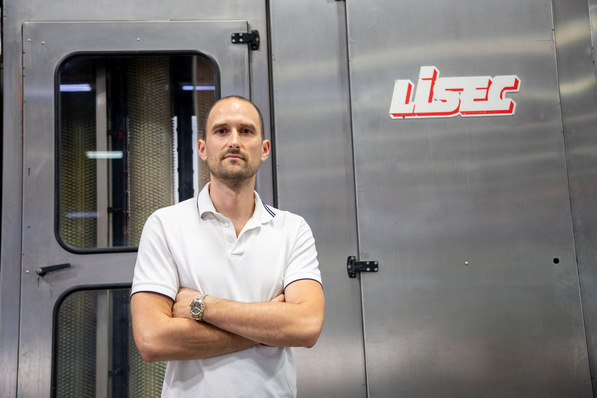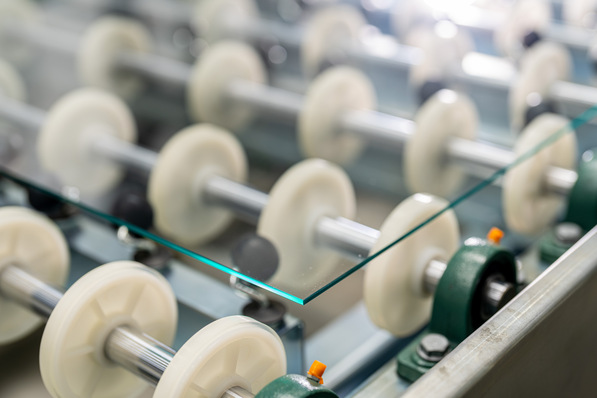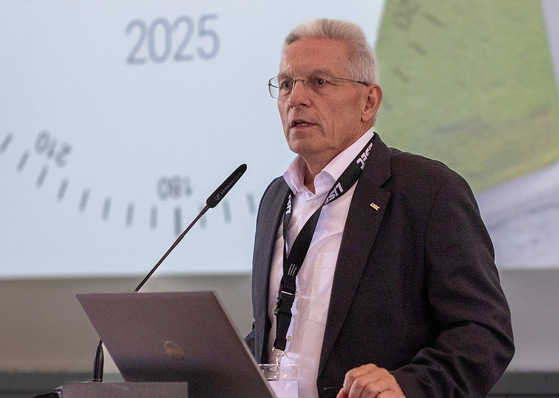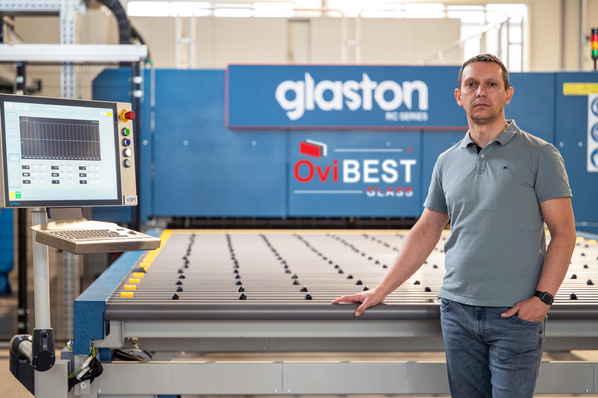GLASWELT – How do you see Wicona’s current position?
Ralf Seufert – We believe we are extremely well positioned. We’re active in all key growth regions and well positioned there too. We recently made the jump to the USA. That’s a very interesting market. Here in particular there is major demand for quality German craftsmanship, i.e. anything labelled “Made in Germany” or “German Engineering”.
Werner Jager – We design and develop all of our products in Ulm, which is where our development department is located. Our commitment to this location ( www.wicona.de ) gives our customers certainty that the engineering is up to standard.
GLASWELT – Why is the local market deemed so important internationally?
Seufert – Well, let me put it this way: the German-speaking region is recognised globally as the leading technical market for façades and windows.
Jager – We simply have the highest standards here. When it comes to advanced technology, there are of course other markets, like London for instance. This city is an interesting market too because this is home to many high-quality building developments and high-rises. Even after Brexit demand there is unlikely to diminish.
GLASWELT – Why are high-rise buildings in London and other cities of interest to Wicona?
Jager – High-rises are increasingly being turned into multi-purpose buildings, incorporating homes, offices, hotels and shops and sometimes even public facilities. A mix of this kind poses very high and, in some cases, very diverse requirements on the associated façades and therefore us too. Naturally that’s something that motivates us.
GLASWELT – Let’s take a quick look back. What conclusions did you draw from BAU, what’s at the top of your agenda now?
Seufert – During BAU there was a special focus on sustainability at our trade fair display, particularly infinitive aluminium. Our system solutions with infinitive aluminium constitute the highest share of recyclable end-of-life aluminium on the market. Here we're talking about a share of recycled aluminium profiles of about 75%. The manufacture is independently certified and fully traceable. We were able to conclude contracts for the first projects right away following BAU. We have found fertile ground in the fields of sustainability, material use and reuse. Our motto is: “I’ve been a window before!”
Jager – We also brought our Next Studio concept to life at the trade fair, inviting our partners to exhibit at our stand too. The display included exhibits currently under construction in practice and in projects. There was also the chance to see some of our customers’ products. If one of our partners has a great product, we want to show it, that to us is a lively partnership.
GLASWELT – So recycling is the foremost issue for Wicona and you’re taking the lead in the sector. Could you explain that?
Jager – For us as a company sustainability has always been an important part of our strategic alignment. That’s been the case for years. Now we’re focusing on the recycled aluminium portion of our profiles and therefore on reducing CO2. Recycling qualities have improved considerably over the past few years. You could say that the quality of the recycled material is now equivalent to that of the primary aluminium. This allows us to offer advantages to architects and investors too. It’s all about building certification and cradle-to-cradle.
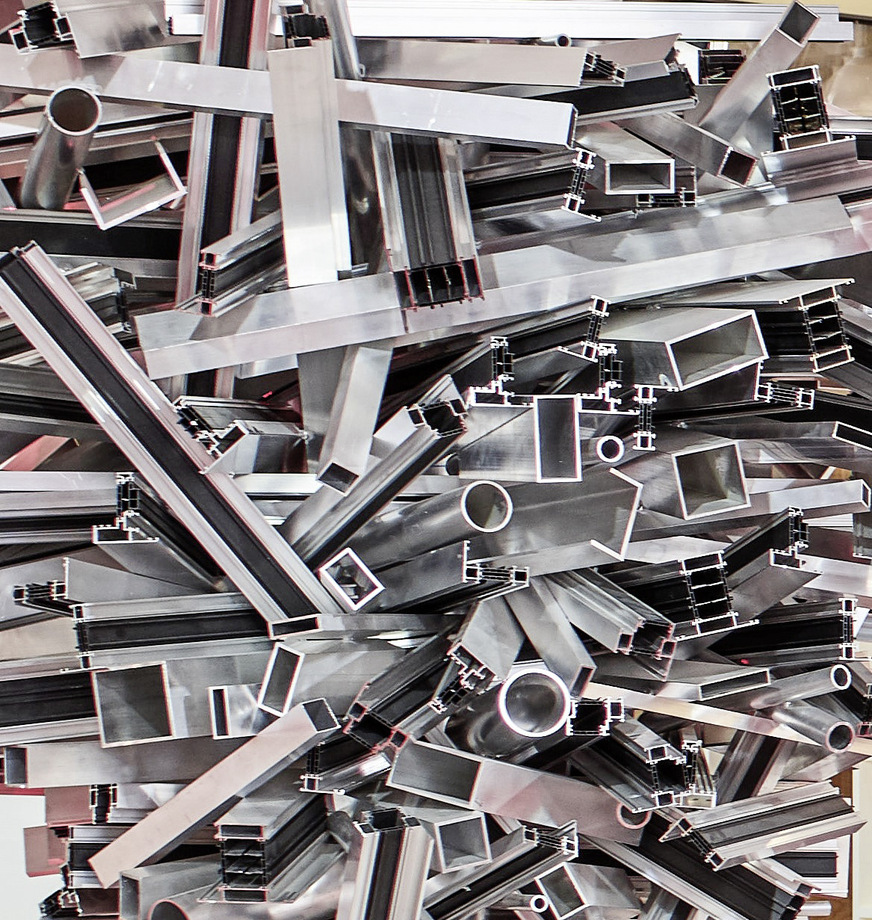
Seufert – Our group wants to be almost CO2-neutral by 2020. That's why our new recycling plant is here in Germany (in Dormagen in Cologne), keeping transportation distances to a minimum. One of the consequences of this is that we are unique in the sector due to the fact we are the only firm to have achieved closed loop recycling. And, as mentioned, the raw material that we market consists of at least 75% recycled materials.
GLASWELT – Do you collaborate with market-active suppliers? I.e. as part of the A/U/F aluminium recycling initiative?
Seufert – That is one of our partners in this segment. They help us to channel our material flows – approx. 30 % of the aluminium scrap in the German construction market. We also work with other partners as well as A/U/F.
GLASWELT – Back to the markets, how important is the German-speaking region to you when it comes to further market development and what role do the international markets play?
Jager – We have big ambitions for continued growth in the German-speaking region; the same applies to Eastern Europe. With this in mind we are currently working on expanding our capacities, particularly in logistics and coating.
Seufert – Processors in all markets are looking for optimum service, and speed. Speed counts everywhere. That is why we attach great importance to control throughout the value chain. Only by doing so can be ensure an optimum manufacturing process and processes themselves.
GLASWELT – New-builds are the current market drivers but, as of 2020, these are set to diminish, what’s your view of this development?
Seufert – We generally perceive the market to be very robust; we are in a boom phase, just like our metalwork partners. That’s set to continue for the foreseeable future. And while new-builds continue to dominate, we always keep an eye on the renovation sector.
GLASWELT – Many administrative buildings of the 70s, 80s and 90s are now ready for renovation. What potential do you see here and what systems do you have in place for this?
Jager – Our focus here is on composite window structures on the one hand, i.e. our 115 series including sun protection. This allows us to offer developers, planners and façade builders a comprehensive package. The systems from the 115 series also feature sound insulation which, in addition to energy efficiency, is becoming more and more important. Renovations are also where our element façades come into their own, in fact these are almost predestined for this field of application.
GLASWELT – Will the renovation market become more important to you in future generally?
Seufert – Newbuilds and renovation are both important to us. We serve both markets.
GLASWELT – Wicona now offers a closed cavity façade. Who are these complex systems aimed at?
Seufert – Specifically at investors planning and operating within the medium- to long-term. Closed cavity systems offer investors crucial advantages, thanks in particular to the integrated sun protection, which requires less maintenance, thus reducing running costs.
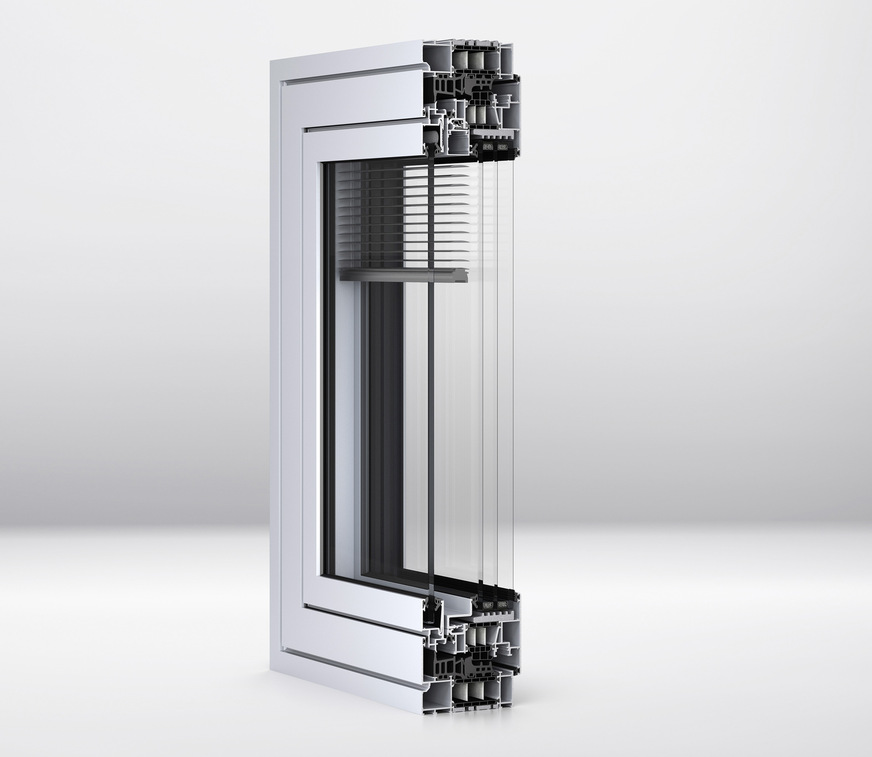
Jager – Wicona closed cavity systems are not complex for our partners. That’s because we provide the metalworkers with the necessary support. We also plan the system’s entire air supply. That means we take on the work that façade builders are unfamiliar with. Added to that, we offer a ten-year system guarantee for our closed cavity façade. This gives tradespeople certainty too.
GLASWELT – What are the major challenges you see for processors?
Seufert – The shortage of skilled workers is the main challenge at the moment. There’s never been as much need to encourage young people to get into the construction industry.
GLASWELT – What support does Wicona offer when it comes to digitalisation?
Jager – We support metalworkers with design software, including details and machine control. Façade specialists can also plan their installation work with our software tools. At the same time we generally place an emphasis on less components in our designs. That in turn helps façade builders to reduce the amount of items they need to keep in stock.
Seufert – In addition this this, our architectural consultants involve metalwork in their consultancy, with sales too, that helps both the planners and the tradespeople carrying out the work. We want to assist all those involved in the process in the entire design and development process, including the developers and financial investors, who we also advise. This is where the Next Studio concept comes into its own again, as well as the incorporation of our partners.
GLASWELT – What do you think of the trend towards transferring building technology into the façade in future and generating energy there?
Jager – We introduced this approach 15 years ago. This is interesting but this won’t really come into its own until someone starts to specialise in this, i.e. takes on the mantel of complete system integrator. We have the know-how within our group and we already have a concept in the form of our TEmotion systems from 2004 that we can further develop and optimise at any time. Some ten years ago we proposed the idea of incorporating heating, ventilation and storage as part of the façade's function, including all cables and pipes, everything was housed in the façade. But with systems like this the same question always arises: how can we incorporate all the trades when implementing something like this? The important thing here is that the building’s architectural concept supports this. And as for generating energy in the façade, we had our first dealings with this back in 1996/97. Back then we started by integrating photovoltaics. We also developed a solar thermal façade system with Ritter Solar.
GLASWELT – Networking isn’t just a factor in façade engineering, it plays a key role when it comes to collaboration too. What was the catalyst for founding Next Studio?
Seufert – For us the Next concept is a win-win situation, where 1 + 1 = 3. Each of our partners has a core skill, just like us, and we want to build on this. That’s exactly the idea behind Next and Next Studio. And that’s what’s on the minds of the target groups who come here to find out more about our core skills, i.e. all things related to the building envelope. The studio is also a place of communication and exchange.
Jager – We don't have a Wicona showroom there, it’s a design studio with a high level of information density. An important part of all this are the events that serve to distribute this information. We want to use Next to take on the topics of the future, the issues that will shape the sector in future. That’s what distinguishes us from a showroom. Visitors to Next don’t just see products. This is a place where they can give their ideas free rein, it's a place where we create room for creativity.
GLASWELT – So would you say that setting up the studio has been worth it?
Seufert – Yes, absolutely. Visitors come here to acquire more knowledge, that’s what this is essentially about. And the response has been amazing. Visitor numbers are far higher than we originally expected. Each month we host two to four events, and we're practically booked out. Added to this is the fact that Frankfurt is very easy to reach by car, train and plane, even from abroad.
GLASWELT – What role do your partners play and how are they selected?
Seufert – The partners must complement one another, each of these must be a leading player in their field, i.e. they must possess innovative drive and bring novel concepts to the table. That is a must. We are focused on the future and expect the same from our partners.
Generally speaking the partners must use this as a means of pushing and stimulating one another to progress further. As a result the studio is permanently changing its image; it’s in a state of constant momentum. We switch partners too, that’s part of the dynamic concept.
GLASWELT – Could you imagine setting up studios like this in other locations and in other countries?
Seufert – Yes, that’s something that’s in the pipeline at the moment and we want to transfer this to other countries too. London in particular is on our radar.—
Interview was conducted by Matthias Rehberger.
